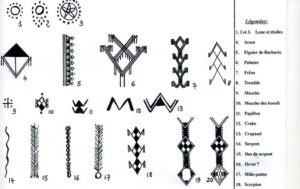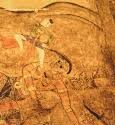Berber society is rich in millennia-old traditions, whether in language, culture, arts, religion, crafts, or sociology.
Amazigh handicrafts
Craftsmanship is still very much alive and well in Berber culture today. The tribes, who have a rural culture, have long engaged in agricultural and breeding operations. Men were assigned to the livestock, while women were in charge of traditional productions such as weaving, notably Berber textiles and carpets, or crafts like as basketry and pottery.
Fantasia
The Berber Fantasia depicts the Maghrebians’ failure to grasp the questorien art. These popular and traditional displays were depicted by orientalisé painters like as Eugene Fromentin, particularly during the Moussems, local celebrations. Fantasia’s presentations are still available as part of tourist attractions today. Historically, the Moors were a horse-riding nation that supplied the Carthaginian and Roman troops throughout the Punic Wars, as well as the French forces in modern times.
Berber Art
Berber art is distinguished by the inclusion of several typical Berber themes and symbols.
The National Carpet Museum Dar Si Said in Marrakech has a collection of rare and valuable Berber carpets.
In Marrakech, the modest Berber Museum of Jacques Majorelle’s Garden showcases various gems, silver jewelry, and textiles manufactured by Berber tribes.

Beliefs
In terms of beliefs, the ancient Libyans followed a Libyan religion that was based on the presence of multiple gods, similar to the Egyptians, as well as spirit forces animating living beings, things, and the elements. Abrahamic religions were then enforced. Islam spread in the 8th century via Arab conquests, and the Berbers have been primarily Sunni Muslims ever since. There are Jewish Berbers as well. Some Berbers became Christians in Roman times, including Saint Augustine in the fourth century. Until the 1960s, there was a sizable Jewish Berber minority. However, many people left for Israel and France.
